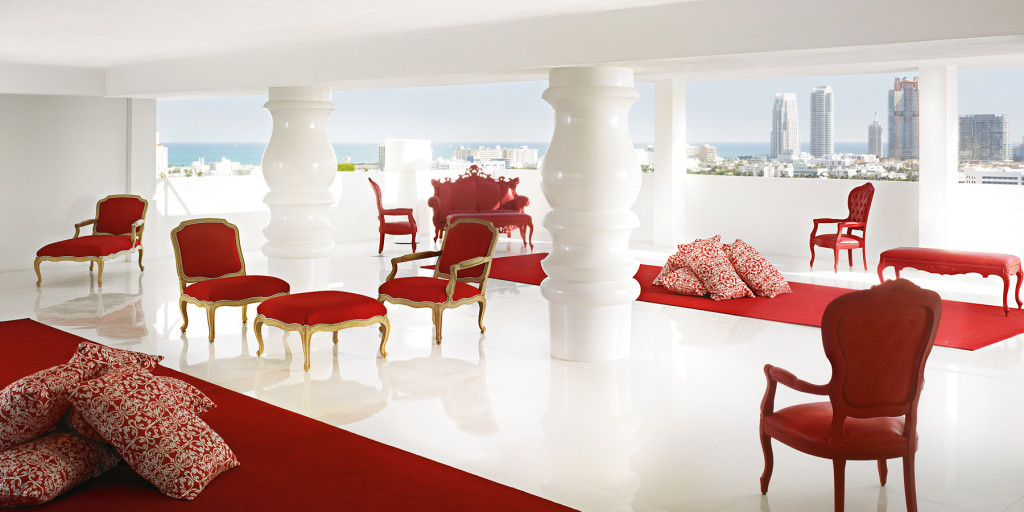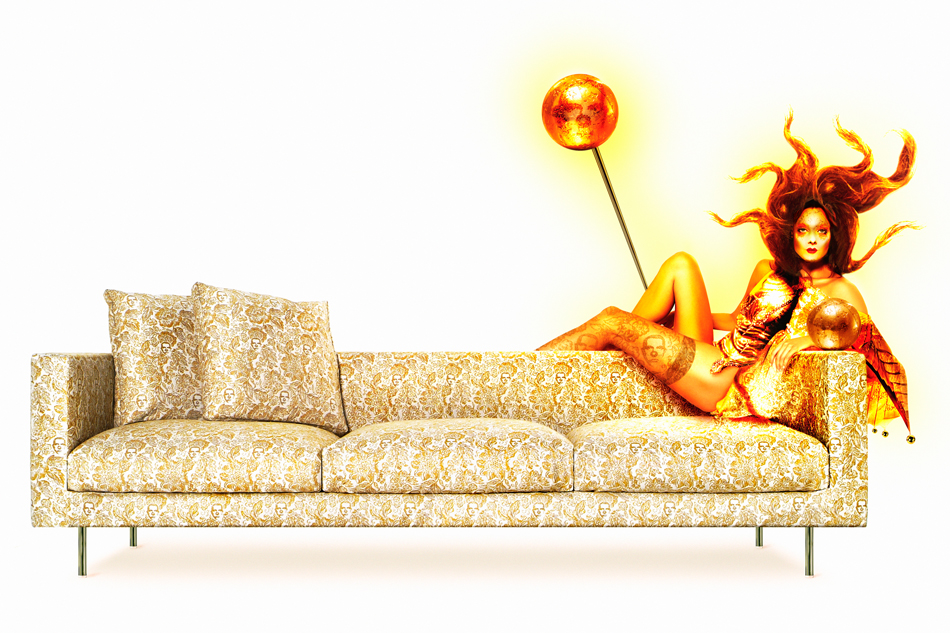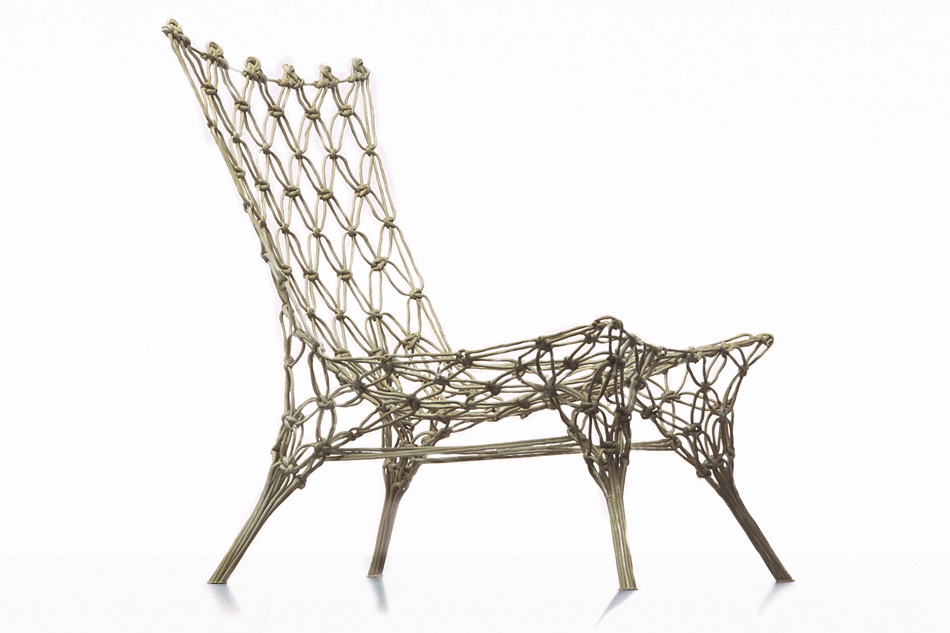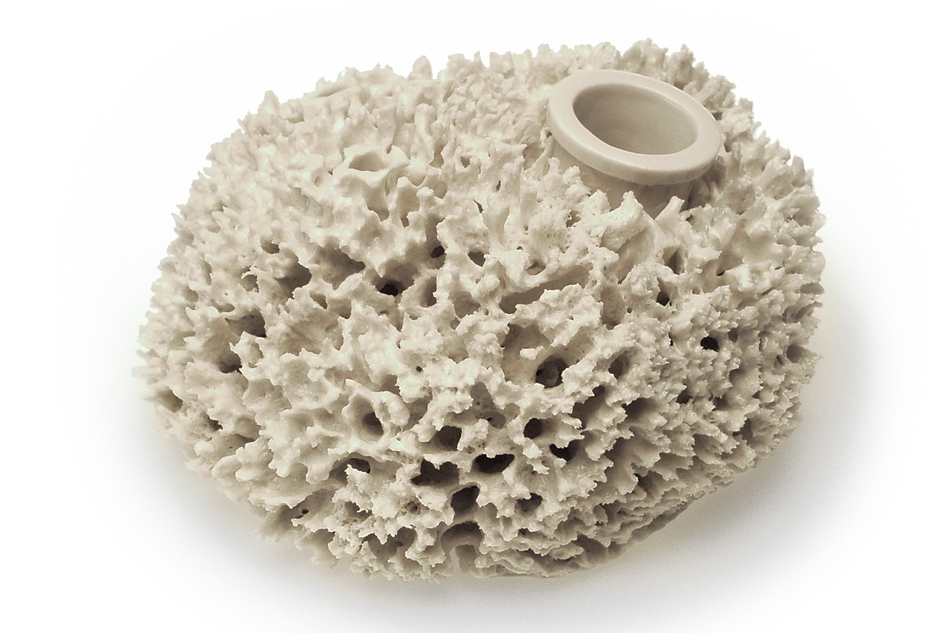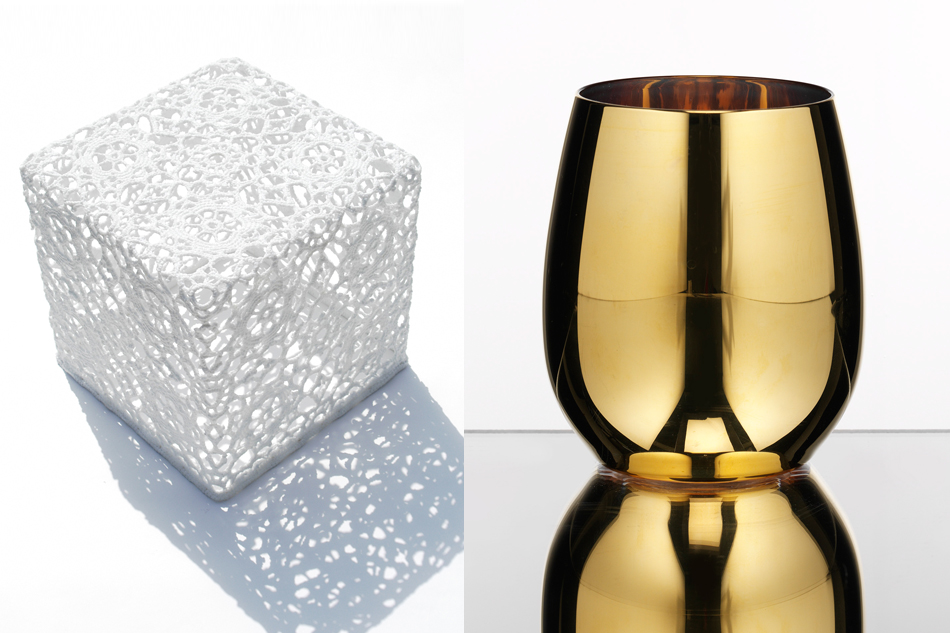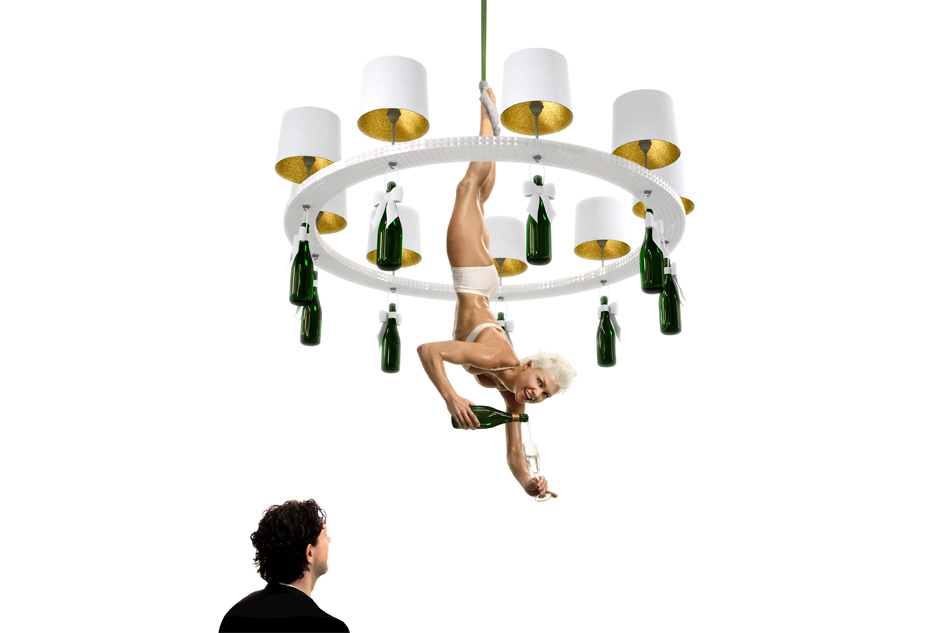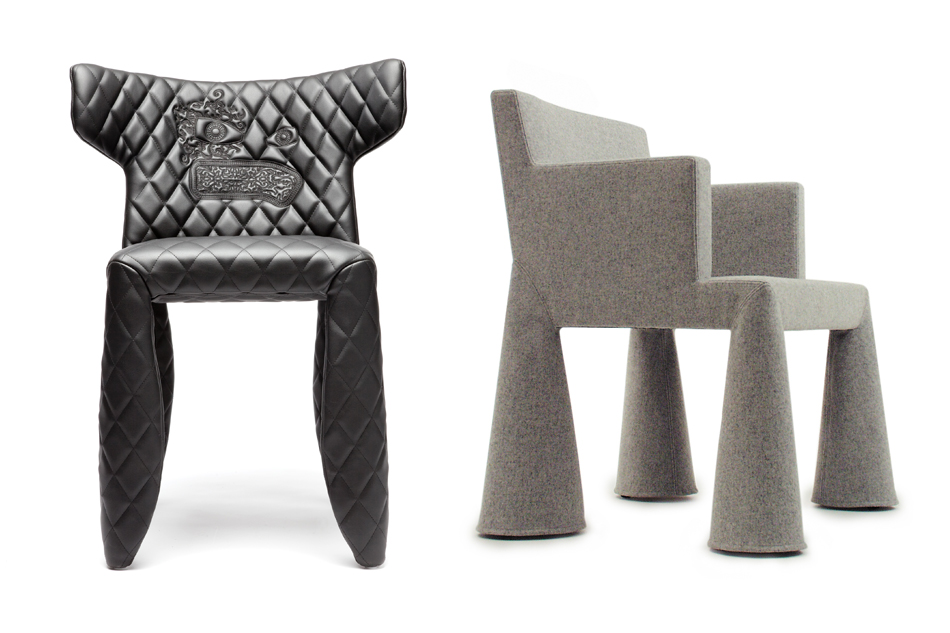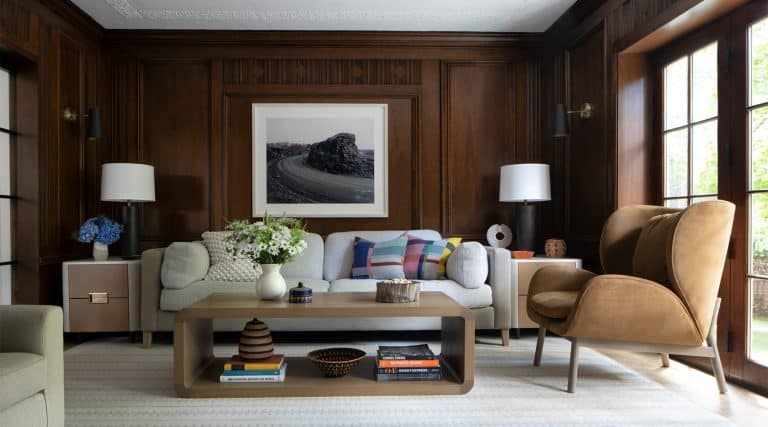
February 8, 2012“Sometimes my work is witty, but it is never a joke,” says Dutch interior and product designer Marcel Wanders. Top: Wanders describes the Mondrian South Beach hotel, which opened in 2008, as his homage to Sleeping Beauty’s castle. All images courtesy of Marcel Wanders
To understand the work of Marcel Wanders, you should first look to the image that adorns everything from his website to his books: the man himself wearing a gold clown nose. The uninitiated may assume this denotes a lack of seriousness in his approach, but that would be a gross error of judgement. The gold nose is simply Wanders’s way of asking us all to lighten up a bit. His designs are not lacking in substance, but they are consciously light of touch. As he says, “Sometimes my work is witty, but it is never a joke. I am simply trying to celebrate the days of our lives and make them even more special. Life is beautiful, and tomorrow may well be even better than yesterday.”
Brought up in Boxtel, a town south of Amsterdam, the city that is home to his studio, Wanders earned a degree in product design from the School of the Arts in Arnhem in 1988. (He graduated with distinction, although he encountered an early setback: Prior to Arnhem he had been dismissed from the Design Academy Eindhoven for an approach deemed too radical even for that famous institution, which has produced some of the world’s foremost design innovators.) In 1995, he opened his own studio in Amsterdam and a year later found international recognition for his much-lauded, macrame-like Knotted chair, which was produced by Droog.
Fifteen years later, the Knotted chair still holds a special place in his affections. “I made it at the right time and in the right location, and it became a universally recognized piece of design, so it is special to me for that reason,” he says. “But it was also because the year previously I had decided to step out of the studio I had been working in and find a way of expressing all the ideas I was having about design. For me, the Knotted chair shows the power of new ideas and how important it is to trust what you think is right. It is the path I have been following ever since.”

Wanders designed the Kameha Grand Bonn, in Bonn, Germany, in 2010.

Wanders strove not to create “another minimalist design hotel” when he worked on the interiors for the Kameha Grand Bonn.
Described last year by the New York Times as the Lady Gaga of the design world — “nearly impossible to ignore” — Wanders has a reputation for producing furniture, lamps and accessories that seem not quite of this world, as though he has raided the palace of a fairy tale princess or the castle of a troll. His designs aren’t superficial or whimsical; they are instead rooted in an especially rich and febrile imagination where every form expresses a mood or emotion. Indeed, Wanders is a shaman, the link between the cool, rational world of design and the supernatural magic of our imaginations.
Other fame-making designs followed the Knotted chair, including the light-as-air Crochet table (2001) and its equally delicate offspring, the Crochet chair (2006). In 2005, together with his then-girlfriend, the award-winning choreographer and dancer Nanine Linning, Wanders combined theatrics and furniture for the Milan launch of Moooi, the design label he co-founded, with the performance piece “Happy Hour Chandelier,” involving a dancing angel who hung upside down from a Wanders-designed light fixture while pouring flutes of Champagne for the crowds below. (For a price, the piece can be replicated at parties and special events around the world.)
Many of Wanders’s designs have been selected for collections and exhibitions at institutions such as the Victoria & Albert Museum, in London; the Stedelijk Museum, in Amsterdam; and the Museum of Modern Art in New York. In 2010, the Philadelphia Museum of Art featured his first solo exhibition, “Daydreams,” a multimedia installation built around designs that Wanders hand-picked from his 20-year career.
“I am simply trying to celebrate the days of our lives and make them even more special,” says Wanders. “Life is beautiful, and tomorrow may well be even better than yesterday.”
Now nearing 50 — “I intend not to walk away from it but to run towards it,” he says — Wanders is still handsome and charismatic, and he’s mesmerizing when he talks. Long viewed as something of a design-world heartthrob (when asked how he liked women to dress, he once famously answered “that they wear as little as possible”), he has a teenage daughter, Joy, from a previous relationship.
His studio of 30 employees juggles an incredible number of projects at any given time, including Moooi, of which Wanders is art director. The name is taken from the Dutch word for beautiful, with an extra “o” to denote “extra” beautiful. Moooi produces many of Wanders’s designs, as well as those of other emerging designers he supports. Projects are split fairly evenly between products and interior design/architecture. The list of names of those who have commissioned his work is impressive — B&B Italia, Cappellini, Puma, Bisazza, Poliform, Flos, Magis, Google, Target, Baccarat, Christofle, Alessi, MAC Cosmetics and KLM Royal Dutch Airlines — showing his ability to meet the needs of demanding clients without compromising his own highly individual signature.
Architectural and interior design projects have included the Kameha Grand Bonn, in Germany, with its exaggerated dimensions of furniture, floral-painted columns and gold lamé chairs; the Mondrian South Beach hotel, in Miami, where, among other things, Wanders put a gigantic vending machine in the lobby filled with luxury items; the sumptuous, monochromatic Villa Moda flagship store, in Bahrain; and private residences around the world. Currently, he is working on hotels in Amsterdam, Majorca and Hong Kong, as well as a palace in Qatar.

Villa Amsterdam, a private residence Wanders designed in 2008, displays his penchant for playing with pattern.

In Bahrain, Villa Moda, 2009, offers a modern-day take on traditional souk shopping, with multiple luxury brands under one roof.
At the more modest-sized end of the spectrum, Wanders has just launched his first homeware and gift collection for that stalwart of the British High Street, Marks & Spencer, a project he is delighted about. “Although we usually work on very upscale projects, it is fantastic to have the opportunity to create objects that can reach millions of people and touch their hearts in some way,” Wanders says. This vast collection includes men’s and women’s accessories, cakes and confectionery, cosmetics and housewares — all displayed at a Wanders-designed gift shop within key stores across the country. Early indications point to soaring success even though many M&S customers don’t likely recognize Wanders’s name. The fact is that witty touches, such as interchangeable cufflinks depicting King Henry VIII and his six wives, appear to have hit just the right nerve with the British public.
It is a life of nonstop activity, but Wanders thrives on the pressure. “I don’t relax, but I don’t get stressed,” he says. “I am really busy and involved, but I stay centered. Here at the studio, we are like marathon runners. If you asked a marathon runner to sprint, he would say no — and that is how it is with us.”
He cites his father, who owned a junk shop full of kitsch objects, as particularly influential on his choice of direction. “He looked at the world in a very theatrical way,” Wanders says. “He taught me that nothing had to be normal, that I was special enough to always do something unique.”
As a child, Wanders loved to make things, often for other people. According to him, a good gift must have two qualities. “A person should open it and think, ‘Oh yes — this is so me,’ he should feel he has been understood by someone else,” Wanders explains. “At the same time, he should think, ‘Only this person could have thought of buying this for me,’ because a gift should celebrate the relationship between two people.” Wanders says he sees his own work in the same way. “I want to be sure that what I give makes my audience feel that they, too, are understood.”
Whether designing plates or palaces, Wanders’s enthusiasm, drive and passion for what he does remain constant. “Designing is like making puzzles,” he says, “you start with ten-thousand pieces, and each one stands for an idea, a function, a material. Someone comes to you with a project, and he too has ten-thousand pieces. You throw all those possibilities together, and from them, you have to construct the perfect puzzle, even though there is no picture on the box. If the last piece of that puzzle fits, it is a moment of absolute joy. I have to keep coming back to that moment, because something wonderful and beautiful happens when you win the struggle of making the pieces fit.”
